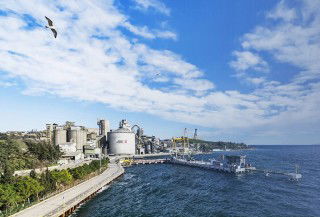Cement consumption in Spain showed no growth in 2023, settling at 14.5Mt, representing a drop of three per cent YoY and five years of stagnation, according to the country’s cement association, Oficemen.
With an installed capacity of approximately 47Mta, capacity utilisation rates are low and Oficemen President, Alan Svaiter, said that a country with the population and GDP of Spain should have a stable demand of around 20Mt. He called for greater implementation of public works, more prominence of private-public partnerships and policies that encourage the construction of social housing and the investment in hydraulic works.
Oficemen’s general director, Aniceto Zaragoza, estimated the country’s investment deficit in water cycle infrastructure is between EUR25-30bn euros. In addition, he urged the government to activate a carbon capture and storage policy to help industry decarbonise. The National Integrated Energy and Climate Plan (PNIEC) includes references to CO2 capture, storage and transport technologies, but the European Commission has demanded greater clarity on the projects envisaged.
Lower exports
Furthermore, exports – often used to cushion the impact of lower domestic sales – have fallen by 7.5 per cent YoY to 5.3Mt. While Oficemen welcomes the establishment of the border carbon adjustment mechanism (BCAF), if only for information purposes at the moment, it advocates for a more competitively favourable formula for European producers.
Higher production costs
The Spanish cement industry is also challenged by high production costs, including the rising cost of the emissions market, where allowances were quoted at an average of EUR83.50 in 2023 compared to EUR 30.20 in 2019. In addition, petcoke costs have increased to EUR155 in 2022 from EUR43.30 in 2019 and while electricity prices have averaged a lower EUR89/MW, they are still 82 per cent above the pre-pandemic price. "We recognize the emergency measures activated by the Government to lower the price of electricity, but the Spanish electro-intensive industry has continued to pay 76.8% more than the French and 32.9% more than the German industry," said Mr Svaiter.

TCC urges carbon tax on high-emission imports
Taiwan Cement Corporation (TCC) has called for the government to impose carbon taxes on import...